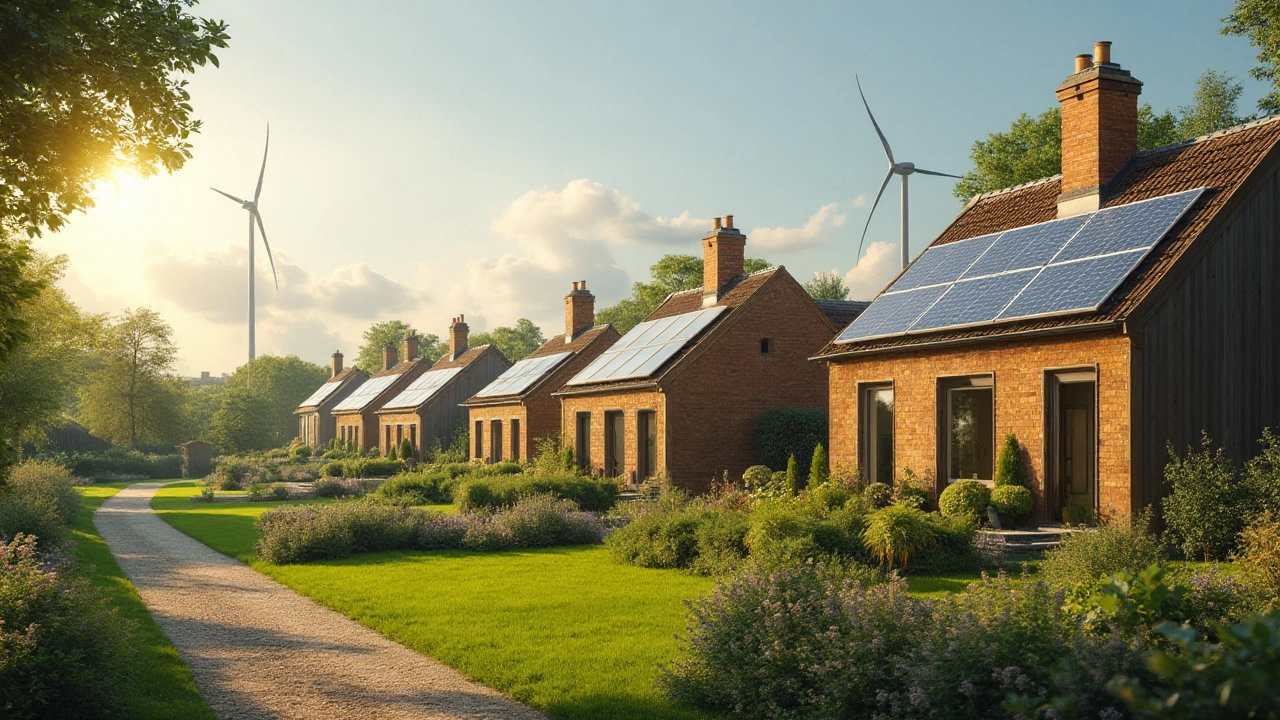Eco-Friendly House Designs: Simple Ways to Build Green
Thinking about a new home or a big renovation? Going green doesn’t have to be a nightmare. Eco‑friendly house designs let you save money, cut energy use, and enjoy a healthier space. In Lancashire, the rolling hills and fresh air make sustainable building feel natural. Below you’ll find the basics you need to start planning a greener home that works for real life.
Key Features of Eco-Friendly Designs
First up, materials. Choose reclaimed wood, locally‑sourced stone, or recycled brick. These options lower transport emissions and give the house a unique look. Next, insulation. Thick, breathable insulation keeps heat in during winter and out in summer, which means less heating and cooling bills. Look for natural fibre batts or sheep‑wool – they work well and are renewable.
Passive solar design is another big win. Position big windows on the south side to capture winter sunshine, and add shading devices like eaves or pergolas for the summer glare. A well‑placed roof overhang can make a huge difference without any moving parts.
Renewable energy sources are a must if you want a truly green build. Solar panels on the roof are the easiest start, but consider a small wind turbine if your site gets steady breezes. Pair them with a battery storage system so you can use power when the sun isn’t shining.
Water doesn’t have to be wasted either. Install rainwater harvesting tanks, low‑flow fixtures, and dual‑flush toilets. Even a simple grey‑water system that redirects shower water to the garden can cut your water bill in half.
Finally, think about the home’s life cycle. Design spaces that can adapt as your family changes – an extra bedroom that becomes a home office, for example. Flexible layouts mean you won’t need a major remodel later on.
Practical Tips for Your Next Build
Start by talking to a local architect who knows the area’s planning rules and climate. They can help you slot eco‑features into a design that meets regulations. When choosing a builder, ask for references on sustainable projects – the right team makes a huge difference.
Pick a simple floor plan. Complex shapes increase the amount of roofing and wall material you need, which adds cost and waste. A rectangular or L‑shaped house is easier to insulate and to align for solar gain.
Seal every gap. Use quality draught‑proofing tape around windows, doors, and service penetrations. Air leaks can undo even the best insulation work.
Go for high‑performance windows. Triple‑glazed units with low‑E coating keep heat in and block UV rays. They’re pricier upfront but pay off quickly through lower energy bills.
If you can, add a heat‑pump system. Modern air‑source and ground‑source heat pumps are efficient, quiet, and work for both heating and cooling. Pair them with a smart thermostat to fine‑tune comfort and savings.
Don’t forget the landscape. Plant native trees and shrubs to provide natural windbreaks and shade. A small orchard or community garden can also boost local biodiversity.
Budget smart. List all eco‑features and rank them by impact and cost. You can phase in some options later – start with insulation and windows, then add solar panels when funds allow.
Once the house is built, track its performance. Use a simple energy monitor to see where you’re using the most power and where you can improve. Small habit changes, like turning off lights or using a timer for the boiler, add up fast.
Feeling inspired? Lancashire already hosts several eco‑friendly cottages and lodges that showcase these ideas. Browse our listings to see real examples, get pricing ideas, and maybe book a stay to experience green living first‑hand. Whether you’re building from scratch or retrofitting an old stone cottage, these steps will keep you on the path to a healthier, cheaper, and more sustainable home.

The Best House Shapes for Eco-Friendly Living
In the quest for sustainable living, choosing the right house shape can significantly impact both environmental footprint and cost efficiency. The design of a home influences energy use, heating and cooling efficiency, and material waste. Embracing compact, simple shapes can lead to substantial economic and environmental benefits. Explore the most eco-friendly house shapes that balance sustainability with affordability, optimizing your living space for better energy consumption.
Continue Reading